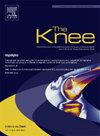Physical measures predicting better outcomes in knee arthroplasty patients: a secondary analysis of the CORKA randomised controlled trial
IF 2
4区 医学
Q3 ORTHOPEDICS
引用次数: 0
Abstract
Background
Evaluate functional and participation predictors of outcome following knee arthroplasty (KA) focusing on the International Classification of Functioning, Disability, and Health framework.
Methods
Secondary analysis of the CORKA randomised controlled trial, which included patients undergoing KA. The primary outcome was the Late-Life Function and Disability Instrument (LLFDI) was assessed using a linear mixed-effects model. Secondary outcomes with baseline assessments of the Physical Activity Scale for the Elderly (PASE), Figure of 8 Walk Test (F8WT), 30-Second Chair Stand Test (30CST), and single-leg stance on the operated leg (SLS) were used to predict functional and participation outcomes at 6, 12, and 24-months using multiple linear regression models.
Results
621 participants were recruited (males 250, females 371), with a mean age of 70 ± 8 years. SLS significantly predicted LLFDI function across all time points (6-months 0.14, 0.06–0.22, p = 0.001, 12-months 0.18, 0.09–0.27, p < 0.001, 24-months 0.21, 0.11–0.31, p < 0.001), while PASE predicted it at 6-months 0.02, 0.01–0.03, p = 0.006 and 24-months 0.02, 0.004–0.04, p = 0.012. PASE also predicted disability frequency at all intervals(6-months 0.03, 0.02–0.05, p < 0.001, 12-months 0.04, 0.02–0.05, p < 0.001, 24-months 0.03, 0.01–0.05, p = 0.001), with SLS and F8WT as significant predictors at 12 and 24-months, respectively (SLS 12-months 0.13, 0.04–0.21, p = 0.005, F8WT 24-months −0.37, −0.73 to −0.01, p = 0.044). Only PASE (12-months 0.04, 0.01–0.07, p = 0.003, 24-months 0.04, 0.01–0.07, p = 0.003) and SLS (12-months 0.26, 0.10–0.42, p = 0.002, 24-months 0.28, 0.12–0.44, p = 0.001) predicted disability limitation at 12 and 24-months.
Conclusions
Findings suggest functional measures may be used to predict short-term outcomes, while participation measures better suit long-term outcomes after KA.
物理测量预测膝关节置换术患者更好的结果:CORKA随机对照试验的二次分析
以国际功能、残疾和健康分类框架为重点,评估膝关节置换术(KA)后的功能和参与预测因素。方法对CORKA随机对照试验进行二次分析,纳入KA患者。主要结果是使用线性混合效应模型评估晚期功能和残疾工具(LLFDI)。次要结果包括基线评估老年人体力活动量表(PASE)、8图步行测试(F8WT)、30秒椅子站立测试(30CST)和手术腿单腿站立(SLS),使用多元线性回归模型预测6、12和24个月的功能和参与结果。结果共纳入受试者621人(男性250人,女性371人),平均年龄70±8岁。SLS在所有时间点上显著预测LLFDI功能(6个月0.14,0.06-0.22,p = 0.001, 12个月0.18,0.09-0.27,p <;0.001, 24个月0.21,0.11-0.31,p <;PASE预测6个月0.02,0.01 ~ 0.03,p = 0.006, 24个月0.02,0.004 ~ 0.04,p = 0.012。PASE还能预测各时间段的致残频率(6个月0.03,0.02-0.05,p <;0.001, 12个月0.04,0.02-0.05,p <;0.001, 24个月0.03,0.01 - 0.05,p = 0.001), SLS和F8WT分别是12和24个月的显著预测因子(SLS 12个月为0.13,0.04-0.21,p = 0.005, F8WT 24个月为- 0.37,- 0.73至- 0.01,p = 0.044)。只有PASE(12个月0.04,0.01-0.07,p = 0.003, 24个月0.04,0.01-0.07,p = 0.003)和SLS(12个月0.26,0.10-0.42,p = 0.002, 24个月0.28,0.12-0.44,p = 0.001)预测12和24个月的残疾限制。研究结果表明,功能指标可用于预测KA后的短期预后,而参与指标更适合于KA后的长期预后。
本文章由计算机程序翻译,如有差异,请以英文原文为准。
求助全文
约1分钟内获得全文
求助全文
来源期刊

Knee
医学-外科
CiteScore
3.80
自引率
5.30%
发文量
171
审稿时长
6 months
期刊介绍:
The Knee is an international journal publishing studies on the clinical treatment and fundamental biomechanical characteristics of this joint. The aim of the journal is to provide a vehicle relevant to surgeons, biomedical engineers, imaging specialists, materials scientists, rehabilitation personnel and all those with an interest in the knee.
The topics covered include, but are not limited to:
• Anatomy, physiology, morphology and biochemistry;
• Biomechanical studies;
• Advances in the development of prosthetic, orthotic and augmentation devices;
• Imaging and diagnostic techniques;
• Pathology;
• Trauma;
• Surgery;
• Rehabilitation.
 求助内容:
求助内容: 应助结果提醒方式:
应助结果提醒方式:


